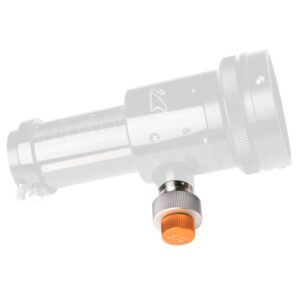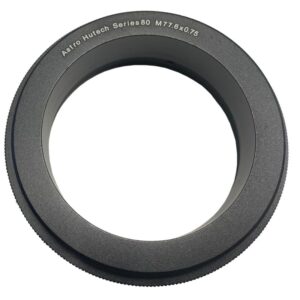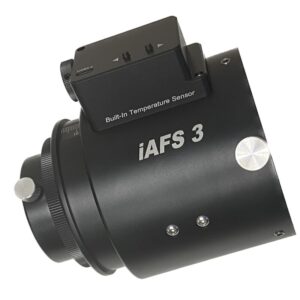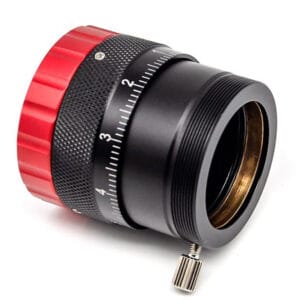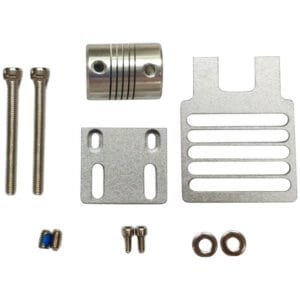Focus & Navigation
Always sharp and precisely focused
With the right focusing and navigation accessories, you'll fine-tune your telescope and find any celestial object with ease. From dual-speed focusers to red-dot finders, each component is designed for speed, precision and ease of use. Available directly from stock and delivered within 48 hours.
Showing all 8 resultsSorted by popularity
Showing all 8 resultsSorted by popularity
Focus & Navigation: Ensure razor-sharp and focused perception
Accurate focus and reliable navigation are the backbone of any successful observing or astrophotography session. With the right focusers and viewfinders, you can find any object quickly and sharply, without hassle or frustration. In this complete guide, you'll discover:
The main focuser types and their advantages
Navigation systems and finders for every level
Integration of motor focusers and electronic aids
Practical tips for installation, use and maintenance
1. Focuser types and applications.
a. Standard Crayford and rack-and-pinion focusers.
Crayford Focusers Offer frictionless, smooth movement without backlash and are ideal for visual use.
Rack-and-pinion focusers are more robust and can carry heavier accessories; suitable for beginning astrophotographers.
b. Dual-speed focusers
With a coarse and fine knob (e.g., 10:1 reduction), you adjust quickly and make precise adjustments for razor-sharp stars even at high magnifications.
c. Motor Focusers
Electronic focusers can be controlled via software - essential for long astrophotography and temperature compensation.
2. Navigation systems and viewfinders.
a. Red-dot finders
A compact, lightweight scope that projects a red dot onto a transparent window. Perfect for quick coarse-finding deep-sky objects and sunrises.
b. Viewfinder prisms & diagonals.
Offer a more comfortable viewing angle (90° or 45°) and can sometimes be combined with crosshair printers for wet navigation.
c. Polarization seekers
Indispensable for precise polar alignment on equatorial mounts: a built-in crosshair and level quick-align helps to quickly and accurately align your axis to the Polaris.
3. Electronic tools
Autofocus controllers Pair with motor focuser for temperature-compensated focusing.
GoTo controllers with object databases make searching unnecessary: simply type in the object number and let your mount do the work.
Plate-solving apps use live images from your camera to precisely center and focus on star patterns.
4. Installation and usage tips
Calibrate your focuser
Test daylight settings to minimize backlash and backlash; work with shims if necessary for better support.Attach searchers
Make sure your red-dot or prism is firmly tapped to avoid false-alignments and vibrations.Save backfocus
After installation, check that your focuser does not introduce too much extra distance-crucial with field flatteners and cameras.Maintenance
Lightly lubricate rack-and-pinion rails with silicone grease; dust optical windows with a blower and microfiber cloth.
Frequently Asked Questions about Focus & Navigation
What is the difference between Crayford and rack-and-pinion focusers?
Crayfords operate frictionlessly without gears, rack-and-pinion focusers use gears and tend to be more robust.When do I choose a dual-speed focuser?
If you want both quick coarse adjustment and very precise focusing at high magnifications or astrophotography.How do I minimize backlash in my focuser?
Use a small shim or refine the clearance by adjusting the clamp of a dual-speed focuser.Are motor focusers necessary for astrophotography?
Not strictly, but they offer temperature compensation and allow remote control for long shots.How do I mount a red-dot finder correctly?
Set it level on the optical tube, attach it with the appropriate screws and aim it at a distant daytime object.What is a polarizer and why do I need one?
A finder with crosshairs and leveling aid for exact alignment of your mount to the pole star.How do I set up my motor focuser via software?
Install the corresponding ASCOM or INDI driver and set backlash compensation and speed in the controller interface.Which viewfinder is best suited for deep-sky objects?
A wide-angle red-dot finder or 6×30 rifle scope provides a wide field of view to find faint fuzzies quickly.How often should I lubricate my focuser?
Once to twice a year, depending on use and environment.Can I combine different searchers?
Yes, you can use a red-dot finder and a prism finder at the same time for flexible searching.How do I prevent vibrations with high-power focusers?
Let the focuser operate at minimum clearance and clamp accessories securely.What is plate solving and how does it help with focusing?
Plate solving analyzes live images to correct your position and can automate focus checks.What software will work with my motor focuser?
Commonly used packages are NINA, Sequence Generator Pro and EZFocus.How do I set up backlash compensation?
Measure the backlash by changing the focus direction and then set a counter movement in the controller.Is a 45° or 90° diagonal better?
45° diagonal is more compact and versatile, 90° diagonal offers the most comfortable viewing angle at high elevations.How do I keep my focusers safe?
Place them in a foam-inlay-based case, protected from dust and moisture.Can I control my focuser remotely via wifi?
Only if your focuser controller has wifi functionality or via a connected Raspberry Pi.How do I quickly align my equatorial mount?
Use a polarizer in conjunction with a smartphone app to determine polar height and direction.What is the advantage of a 6×30 rifle scope?
It offers a brighter, larger field of view than a small red-dot window, which simplifies coarse searching.Should I adjust my focuser before each session?
At constant temperature and installation location, not always, but at large temperature variations, to maintain optimal sharpness.

